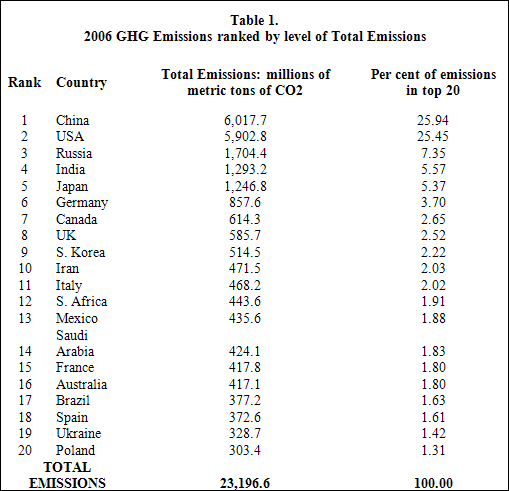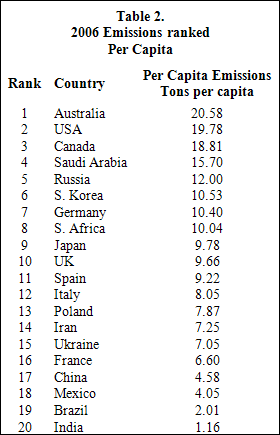The Rudd Government has set a number of targets to curb global warming and its effects. Many fail to achieve the outcomes claimed for them or have undesirable outcomes which increase rather than abate global warming. Among these are the following:
Target 1. By 2020, reduce greenhouse gas (GHG) emissions to prevent global temperatures rising by more than 2C above those of the pre-industrial period.
Government is only committed to reducing Australian GHG emissions to 5 per cent below 1990 levels by 2020 unless all other countries agree to a higher percentage at the Copenhagen Conference - an unlikely outcome.
Advertisement
Scientists have already warned that a minimum 25 per cent to 40 per cent reduction below the 1990 level of GHG emissions must be achieved by 2020 to ensure this, followed by moving towards a near carbon-free economy by 2050. Some scientists assert that a 2020 target of 40 per cent - 50 per cent below 1990 emissions must be aimed for. Since government policies ensure that GHG emissions by Australia are continuing to rise, it is doubtful that even a 5 per cent target could or would be achieved.
The 5 per cent target is wholly inadequate and has nothing to do with timely curtailment of emissions to ensure that global temperatures rise by no more than 2C before 2100. It has everything to do with protecting the economy by ensuring that the price of energy in Australia remains unchanged vis-à-vis its cost in other countries.
Target 2. Ensure that global warming does not exceed 2C above the pre-industrial temperature by 2100.
However, scientists have stated that in order to achieve this target, countries must reduce their emissions by a minimum of 25 per cent by 2020. Since most of the major emitters have no intention of aspiring to, let alone achieving, this target it is possible that global warming could result in an increase of 5C by 2100.
It is wrong to claim that Australia is acting to limit global warming to 2C by 2100 or that this can be achieved. It is wrong to believe that global warming will not result in much higher global temperatures, particularly in polar regions where recent temperature increases have exceeded average global increases.
It is wrong and dangerous to assume that this will not cause major and escalating melting of the Greenland and Antarctic Ice Sheets with catastrophic effects on sea level and flooding of the most densely populated and cultivated coastal land areas.
Advertisement
Target 3. Legislate for a mandatory renewable energy target (MRET) to ensure that 20 per cent of energy comes from renewable sources by 2020.
Many believe that implementation of this target will result in a 20 per cent reduction in GHG emissions. Nothing could be further from the truth.
The Productivity Commission (PDF 547KB) has drawn attention to the fact that once an ETS has established a price for carbon, an MRET does not result in greater reduction of carbon emissions, merely the composition of those emissions. The only exception to this is where the carbon price set by the ETS is so low that it does not result in a carbon reduction above that arising from the MRET.
The true price of carbon to be set by the proposed Carbon Pollution Reduction Scheme or CPRS (the government’s ETS), is properly calculated as the total price paid for emissions permits divided by the total emissions permitted. The higher the volume of emissions covered by free permits, the lower the unit price of carbon. The Rudd Government proposes to issue a significant number free emission licences to major polluters. This may well force down the price of carbon to the extent that the ETS fails to bring about a reduction in GHG emissions by 2020. In that case MRET will have a real though small effect in reducing emissions, though not below 1990 levels.
Renewable sources currently produce a relatively low 9,500 gigawatt hours per annum. If the MRET target is to be met this will have to increase to 45,000 gigawatt hours per annum, because of expected (understated) growth in demand for energy between now and 2020. At pages xvi - xviii of its submission the Productivity Commission (PDF 547KB) notes that setting a mandatory target for renewable energy is not a cost-effective way of reducing GHG emissions. It distorts the market by making electricity more expensive, at least in the short term.
True, the MRET will attract new investment into production of electricity from renewable sources but, given the current state of technology, such a significant increase can only be met by attracting more expensive forms of production. Wind and nuclear power generation will be competitive with coal and gas once the latter are subject to paying emission licence fees. However, availability of wind is limited and nuclear generation has been rejected by government and opposition alike.
Target 4. Ensure that reduction of GHG emissions is brought about in the most cost-effective manner possible.
As noted above, the legislated requirement that an MRET operate in conjunction with an ETS ensures just the opposite.
In order to meet the mandatory target for electricity produced from renewable sources, it will be necessary to encourage investment in less efficient ways of generating electricity, notably solar. Since solar technology produces electricity inefficiently and is slow to develop, its use will force up the cost of meeting the MRET until other, cheaper means of generating electricity become available - such as geothermal or use of improved photovoltaic cells.
Not only does an MRET operating in conjunction with an ETS encourage the use of less efficient, more expensive ways of generating electricity, it requires it. Moreover, it reduces or deadens the R&D stimulus to produce energy from renewable sources in the most cost efficient manner possible.
Target 5. Introduce an ETS which will cost effectively and efficiently reduce GHG emissions and stimulate production of cheaper energy from renewable sources.
The ETS in the form proposed by governments CPRS is neither efficient nor effective since it:
- does not require government to adopt, adhere to and implement a meaningful and timely reduction of GHG emissions;
- excludes generating revenues for direct subsidies promoting research and development of renewable sources of energy or improvements in its storage (increasing efficiency and usage) and transmission (reducing loss);
- envisages international trading in GHG emission permits, even those which may be of a spurious nature - for example, those put on the market by PNG, Indonesia and so on;
- enables government to subsidise the worst GHG emitters by issuing free licences; and
- does not require government to cease subsidising or otherwise assisting GHG emitters or production of coal, a major source of global GHG emissions.
Target 6. Adopt policies which encourage international cooperation in reduction of GHG emissions, particularly by those countries responsible for the highest level of emissions.
Rather than do this, the Prime Minister, supported by Economics Professor Garnaut - though not by climate scientists - has called for those countries with the highest per capita emissions to make the highest reductions. They argue that the people of China, India and other developing economies have a right to improved living standards for their people until comparable with those of developed economies and, to do so, must be permitted to expand their energy sector and GHG emissions.
Of necessity this must involve them increasing their GHG emissions. This should be permitted. A fall in global GHG emissions should result from developed economies reducing their emissions until, per capita, they are the same as those of the developing countries. It should come as no surprise that both India and China have been vocal is support of this view.

Table 1: Total emissions represent about 81 per cent of 2006 global emissions (28,420.9 million tonnes) by 223 countries.
Table 1 shows the volume of GHG emissions by the 20 top emitters, ranked by their emissions, showing that China and the USA are responsible for more than 51 per cent of those emissions. It can be argued that those responsible for the highest emissions have the capacity to reduce those emissions by the greatest tonnage and should be encouraged to do so. Improved standards of living can and must be achieved, not by reducing energy but by reducing GHG emissions associated with its production.

Table 2
Source: Union of Concerned Scientists
Table 2 shows the same 20 top emitters ranked in order of GHG emissions per capita. Given the huge populations of India (1.104 billion) and China (1.313 billion) it is no surprise that both countries are ranked in the bottom four. Note that Table 1 shows them in the top four because of their significant GHG emissions in absolute terms - 7.15 billion tones or 31 per cent of total emissions by the 20 top polluters.
Little wonder that India and China strongly support the Rudd view that those with the highest per capita emissions should be required to make the biggest reductions. However, that view ignores the obvious contentions that the largest polluters have the greatest capacity to reduce emissions and can do so without having to forego further development by generating additional energy needs with lower or no emissions.
How then does Rudd justify his per capita argument? Could it be that he is motivated by the fact that both India and China are potentially immense markets for Australian coal, a product which over the next decade or longer, can not be used without increasing GHG emissions?
What is clear is that Rudd is not serious about bringing about either an Australian or global reduction in GHG emissions.
Given the total inadequacy of the targets he has adopted, neither he nor Australia can be seen by anyone as setting a good example or providing leadership in this all important area.
It is not only the inadequacy of the targets Rudd has set, it is also the ETS he intends adopting. It is a corruption of what was recommended by Garnaut. The CPRS is little more than a device for perpetuating the use of fossil fuels, particularly coal, by under-pricing carbon.
Mitigating global warming and its disastrous effects on human habitat appear to be very much a secondary consideration for government.